
Helicopter Engines and the Gremlins That Eat Them

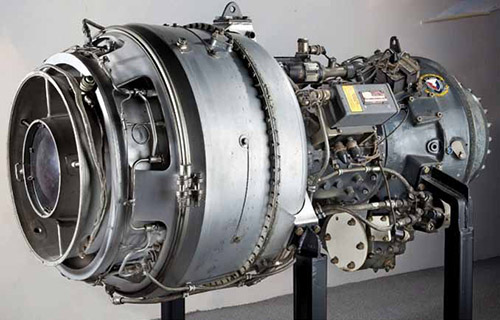
I have seen the word helicopter defined as" too many moving parts moving in too many different directions all at the same time.” This isn’t too far off, as many parts move to accomplish flight. There are mechanical systems, electrical systems, pneumatic systems and hydraulic systems all working together to “fly” the helicopter. We could debate which of these systems is the most important, but reality says that without power, we are not going anywhere. So today, we are going to talk about our helicopter’s engines and the “gremlins” that like to eat them.
Today’s helicopter engines are marvels of technology and power. These engines have heavy demands placed upon them for performance and reliability. To sustain these demands, knowing when your helicopter engine tells you something is not right and how it impacts maintenance is paramount to managing and operating a safe, efficient and cost-effective helicopter operation.
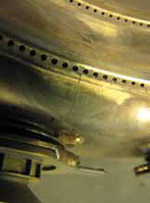
When designing a helicopter, whether a light, intermediate, medium or heavy lift platform, as we said earlier, nothing flies without power. The helicopter OEM always wants the most power from the smallest, lightest engine possible. Likewise, engine OEMs will design an engine to be used in a single or dual configuration that is designed for a particular weight class helicopter. The first step in determining that a “gremlin” may be lurking in the shadows is knowing what the power output of the engine should be for a given condition (high, hot, etc.) and recognizing that something is not right when that power level is not there is.
Regulatory Standards
Basic standards for engine maintenance are formulated within the regulatory framework of the approving regulatory body of the engine OEM, starting at the original design and certification stage. Created by the engine OEM, this includes the establishment of life limits for rotating and non-rotating parts and will be incorporated into the instructions for continued airworthiness (ICA), which become part of the basic approval program. A service management plan is the final certification phase to determine the basis of the maintenance schedule and operation of the engine.
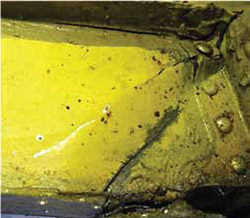
The same regulatory framework establishes basic minimum engine maintenance requirements for operation once installed in a certificated airframe. Many larger operators may add a variety of maintenance and performance requirements to their own maintenance schedules to ensure the continued safe and cost-effective operation of the engine, and to meet the regulatory approval requirements for their own specific type of operation.
Regular Maintenance
Engine maintenance falls into a number of categories of scheduled maintenance events, including routine inspections and overhauls, as well as unscheduled events including repairs, component replacements and troubleshooting.
Basic maintenance of engines includes visual inspections of the exterior and visible interior of the engine and associated systems. Specific inspections of the lubricating system’s oil, filters and chip detectors or magnetic plugs for evidence of metal or carbon is also a must do, as they can be indicative of more serious problems with the internal bearings and components, rotating seals, etc. Inspection of fuel and ignition systems is also of utmost importance when it comes to basic maintenance. A regularly-scheduled check of the filtration system to ensure that clean fuel is being delivered to the burner nozzles is a must.
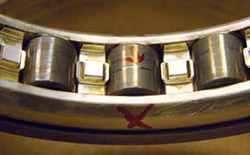

With all of these maintenance tasks and regulations, how do the gremlins get their foot in the door (uh, engine)? Gremlins come in many shapes and sizes and in most instances, they work together to cause an engine malfunction or failure.
While a modern helicopter engine is reliable, an engine failure event can occur. This can be due to a wide variety of reasons, and sometimes for more than one reason.
An engine can fail because of a mechanical fault in its manufacturing process. The alloys used to make the parts can be damaged by an irregular cooling process, formation of air molecules and introduction of contaminants. Compressor or turbine blades might crack, and when under extremely high revolutions, these spinning pieces of metal posses amazing amounts of energy that can shred the whole engine to bits.
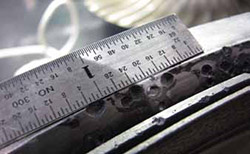

Another form of engine failure is a flame out due to total fuel exhaustion. Fuel exhaustion can come about in a variety of ways, like a fuel leak not being detected until too late, an error in the fueling of the aircraft, or simply not paying enough attention to the fuel state. Fuel contamination (usually by water) can also lead to an engine flameout.
In some situations, flames can be seen shooting from the engine, accompanied by loud bangs. This is known as a compressor stall and it occurs when the airfoil of the compressor stalls due to irregular air flow and patterns. There is not enough pressure for the hot combustion gases to be forced to flow out, and these might reverse direction or buildup until discharged by a loud bang.
While things can always go wrong with an engine, most engines can keep and have kept functioning for thousands of flight hours without the faintest problem. Modern engines are miracles of engineering and the engineers who designed and built them deserve all the credit.
Failure Scenario
A failure scenario is the complete identified possible sequence and combination of events (conditions) leading to a failed system state. It starts from causes (if known), leading to one particular end effect (the system failure condition).
Rather than the simple description of symptoms that many product users or process participants might use, the term failure scenario/mechanism refers to a rather complete description. This includes the preconditions under which failure occurs, how the thing was being used, proximate and ultimate/final causes (if known) and any subsidiary or resulting failures that result.
Now that we have identified what a failure scenario is, let’s discuss what gremlins we are likely to find in that scenario.
Component/Part Failure
Even parts with life limits can fail before their time. A part failure mode is the way in which a component fails functionally on the component level. Often a part has only a few failure modes — thus a relay might fail to open or close contacts on demand. Many different kinds of failure mechanisms can cause this, and often multiple factors play a role simultaneously. These include corrosion, welding of contacts due to an abnormal electrical current, return spring fatigue failure, unintended command failure, dust accumulation and blockage of the mechanism, etc.
Seldom is there only one cause (gremlin) that can be identified that creates system failures. The (end) or immediate effects of failures can also be diverse depending on the function in the system. The relay failure might result in a failure (actually a fault) to activate a locking actuator. This is called the sub-system effect or sub-system functional failure mode. Finally, this might result in severe damage to the system (the end effect) due to the loss of a protection device. An effect from a lower level system can cause a higher-level system failure. We call this a cascading failure, which is a failure in a system of interconnected parts (in our scenario, the helicopter’s engine), in which the failure of a part can trigger the failure of successive parts.
Mechanical Failure
Some types of mechanical failure mechanisms (gremlins) are buckling, thermal shock, wear, corrosion and various types of fatigue. The way the product is loaded and the loading history are also important factors which determine the outcome. Of critical importance is design geometry because stress concentrations can magnify the applied load locally to very high levels, from which cracks usually grow.
As more is understood about a failure, the failure cause evolves from a description of symptoms and outcomes (effects) to a systematic and relatively abstract model of how, when and why the failure comes about (causes).
The more complex the product or situation, the more vital an understanding of its failure cause is to ensuring its proper operation (or repair). Materials can be degraded by their environment by corrosion processes. Such processes can also be affected by load in the mechanisms of stress corrosion cracking and environmental stress cracking.
Metal Fatigue
Metal fatigue is the progressive and localized structural damage that occurs when a material is subject to cyclic loading. The nominal maximum stress values are less than the ultimate tensile stress limit, and might be below the yield stress limit of the material.Fatigue occurs when a material is subjected to repeat loading and unloading. If the loads are above a certain threshold, microscopic cracks will begin to form at the stress concentrators such as the surface, persistent slip bands (PSBs) and grain interfaces. Eventually, a crack will reach a critical size and the structure will suddenly fracture. The shape of the structure will affect the fatigue life significantly. Square holes or sharp corners will lead to elevated local stresses where fatigue cracks can initiate. Round holes and smooth transitions or fillets are therefore important to increase the fatigue strength of the structure.
Fatigue Characteristics
(Gremlins Galore)
• In metals and alloys, when there are no macroscopic or microscopic discontinuities, the process starts with dislocation movements, eventually forming persistent slip bands that nucleate short cracks.
• Macroscopic and microscopic discontinuities, as well as component design features which cause stress concentration (keyways, sharp changes of direction, etc.), are the preferred location for starting the fatigue process.
• Fatigue is a process that often shows considerable scatter, even in controlled environments.
• Fatigue is usually associated with tensile stresses, but fatigue cracks have been reported due to compressive loads.
• The greater the applied stress range, the shorter the life.
• Fatigue life scatter tends to increase for longer fatigue lives.
• Damage is cumulative. Materials do not recover when rested.
• Fatigue life is influenced by temperature, surface finish, microstructure, presence of oxidizing or inert chemicals, residual stresses, contact (fretting), etc.
• Some materials (e.g., some steel and titanium alloys) exhibit a theoretical fatigue limit below which continued loading does not lead to structural failure.
• High cycle fatigue strength (about 103 to 108 cycles) can be described by stress-based parameters. A load-controlled servo-hydraulic test rig is commonly used in these tests, with frequencies of around 20–50 Hz. Other sorts of machines, like resonant magnetic machines, can also be used and achieve frequencies up to 250 Hz.
• Low cycle fatigue (typically less than 103 cycles) is associated with widespread plasticity in metals; thus, a strain-based parameter should be used for fatigue life prediction in metals and alloys. Testing is conducted with constant strain amplitudes typically at 0.01–5 Hz.
Buckling
In practice, buckling is characterized by a sudden failure of a structural member subjected to high compressive stress, where the actual compressive stress at the point of failure is less than the ultimate compressive stresses that the material is capable of withstanding. For example, during earthquakes, reinforced concrete members might experience lateral deformation of the longitudinal reinforcing bars. This mode of failure is also described as failure due to elastic instability. When load is constantly being applied on a member such as a column, it will ultimately become large enough to cause the member to become unstable. Further loads will cause significant and somewhat unpredictable deformations, possibly leading to complete loss of load-carrying capacity. The member is said to have buckled, to have deformed.
Fracture
A fracture is the separation of an object or material into two or more pieces under the action of stress. The fracture of a solid almost always occurs due to the development of certain displacement discontinuity surfaces within the solid. If a displacement develops, in this case perpendicular to the surface of displacement, it is called a normal tensile crack or simply a crack. If a displacement develops tangentially to the surface of displacement, it is called a shear crack, slip band or dislocation.
Fracture strength, also known as breaking strength,is the stress at which a specimen fails via fracture. This is usually determined for a given specimen by a tensile test, which charts the stress-strain curve. The final recorded point is the fracture strength.
Thermal Shock
Thermal shock occurs when a thermal gradient causes different parts of an object to expand by different amounts. This differential expansion can be understood in terms of stress or of strain equivalently. At some point, this stress can exceed the strength of the material, causing a crack to form. If nothing stops this crack from propagating through the material, it will cause the object’s structure to fail.
Wear
In materials science, wearis erosion or sideways displacement of material from its “derivative” and original position on a solid surface performed by the action of another surface.
Wear is related to interactions between surfaces, and more specifically, the removal and deformation of material on a surface as a result of mechanical action of the opposite surface. The need for relative motion between two surfaces and initial mechanical contact between asperities is an important distinction of mechanical wear as compared to other processes with similar outcomes.
Corrosion
Corrosion is the gradual destruction of materials (usually metals) by chemical reaction with its environment.
In the most common use of the word, this means electrochemical oxidation of metals in reaction with an oxidant such as oxygen. Rusting, the formation of iron oxides, is a well-known example of electrochemical corrosion. This type of damage typically produces oxide(s) or salt(s) of the original metal. Corrosion can also occur in ceramics and polymers — although in this context, the term degradation is more common. Corrosion degrades the useful properties of materials and structures, including strength, appearance and permeability to liquids and gases.
Many structural alloys corrode merely from exposure to moisture in the air, but the process can be strongly affected by exposure to certain substances. Corrosion can be concentrated locally to form a pit or crack, or it can extend across a wide area more or less uniformly, corroding the surface. Because corrosion is a diffusion-controlled process, it occurs on exposed surfaces. As a result, methods to reduce the activity of the exposed surface can increase a material’s corrosion resistance.
Welding
Welding is a fabrication or sculptural process that joins materials, usually metals or thermoplastics, by causing coalescence. This is often done by melting the work pieces and adding a filler material to form a pool of molten material (the weld pool) that cools to become a strong joint, with pressure sometimes used in conjunction with heat or by itself, to produce the weld. This is in contrast to soldering and brazing, which involve melting a lower-melting-point material between the work pieces to form a bond between them, without melting the work pieces.
As you can see, gremlins come in all shapes and sizes and rarely, if ever, will they be present alone. They usually start out singularly, but soon reinforcements arrive.
The one gremlin we have not discussed is you. As people, we are very complex beings, and our state of mind at 11:00 a.m. on a Wednesday is probably quite different than what it is at 5:00 p.m. on a Friday. Just when an unscheduled maintenance event will present itself cannot be known in advance. How you respond to it can mean the difference between a $3,000 fix and a $30,000 fix, depending on what you did or did not do at the time the event presented itself. Intimate understanding of your helicopter’s engines and recognizing when some small thing is not quite right can be the starting point to keeping those pesky gremlins from eating your engines.
